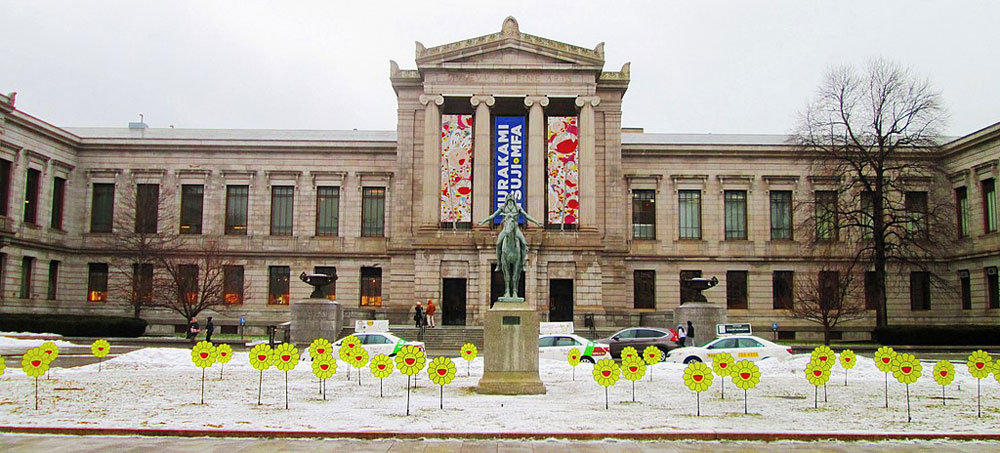
November 28, 2020; Boston Globe
When Boston’s Museum of Fine Arts (MFA) announced on October 1st that Edward E. Greene would be its first Black board president, the news, writes the Globe’s Malcolm Gay, “highlighted an uncomfortable truth about the city’s cultural sector”—namely, that their boards remain heavily white.
Of course, in this respect, Boston’s nonprofits follow national trends. As NPQ has widely covered, data consistently show that nonprofit boards remain overwhelmingly white despite repeated statements about the importance of equity, diversity and inclusion. But as Gay observes, “The question of equitable representation has gained increased urgency in recent months, as the deaths of George Floyd, Breonna Taylor, and others have laid bare structural inequalities, prompting organizations across the spectrum to take a hard look at themselves.”
In looking at nonprofits in Boston, it is useful to take a quick look at the demographic data. According to the US Census Bureau, in round numbers, about 45 percent of Boston residents are white, 25 percent Black, 20 percent Latinx, and 10 percent are Asian or Native American. Yet here, according to a new Boston Globe survey, are the percentages of white people on the boards of local arts institutions, which are much higher:
| Nonprofit Institution | Percent of Board Members Who Are White |
| American Repertory Theater (ART) | 71% |
| Boston Ballet | 89% |
| Boston Center for the Arts | 75% |
| Boston Lyric Opera | 100% |
| Boston Symphony Orchestra | 90% |
| Isabella Stewart Gardner Museum | 71% |
| Handel and Haydn Society | 89% |
| Huntington Theatre Company | 92% |
| Institute of Contemporary Art | 84% |
| Museum of Fine Arts | 77% |
| Peabody Essex Museum | 82% |
The only exception among the surveyed organizations is the city’s Museum of African American History, where whites were only 27 percent of board members. The Globe also notes that only 31 of 40 ART board members indicated their race, so the percentage there is based on those 31.
In the wake of the national racial justice uprising, many Boston institutions have responded. Steps taken include publishing statements in support of Black Lives Matter, hiring diversity consultants, forming board subcommittees devoted to equity and inclusion, and holding community forums, among others. Yet board diversity remains elusive for many.
“In no way do I want to express satisfaction with where we are,” Meredith (Max) Hodges, executive director of Boston Ballet, tells Gay. “Representation is deeply important. The Ballet needs to do better, and we’re working hard at doing better.”
Brian Kennedy, director and CEO at the Peabody Essex Museum, says the issue goes to the “core values” of the museum world, which developed in “power structures that are rooted in whiteness.” Kennedy, whose board is more than 80 percent white, concedes, “It’s been a time of reckoning for all of us.”
Sign up for our free newsletters
Subscribe to NPQ's newsletters to have our top stories delivered directly to your inbox.
By signing up, you agree to our privacy policy and terms of use, and to receive messages from NPQ and our partners.
David C. Howse, executive director of ArtsEmerson, is one of four Black trustees on the MFA’s 43-member voting board. Howse notes that one obstacle to building more racially diverse boards is “we are loath to shift those structures because of what it might mean for our business models”—code for the field’s dependency on large board donations.
Greene, the new MFA board president, is now on the steering committee of the Black Trustee Alliance for Art Museums, a recently formed group of influential Black leaders working to increase the ranks of Black board members nationally.
Greene contends that board diversity is important not only in terms of equity, but also for long-term cultural staying power.
“We must understand the communities that are right around us to be relevant,” Greene informs Gay. “If we want to maintain a narrow 18th-century, 19th-century European view, that’s beautiful, and a very few select folks will come. But over time that museum will not exist.”
MFA director Matthew Teitelbaum concurs that positioning the museum as one that contributes meaningfully to the surrounding community is critical to maintaining the institution’s vaunted “business model.” As Teitelbaum puts it, “Fundraising and philanthropic capability is not just individual giving. It’s also the influence they have—the kind of connections and willingness to put the interests of the institution forward.”
“There are folks across all communities in Boston who could make those financial contributions directly and indirectly,” Teitelbaum adds. “We have to identify them. We have to encourage them, and we have to make them feel as though they can make a difference at the MFA.”
The Rev. Gloria White-Hammond, a board member at the Isabella Stewart Gardner Museum, notes that recruiting new board members is only one part of achieving diversity and that engaged listening, critical self-reflection, and creativity are equally important.
“It remains to be seen how many of the well-crafted solidarity statements are reflected in what people actually do,” observes White-Hammond, a physician and co-pastor at Bethel AME Church in Jamaica Plain. “Racism has been so baked into the system. We don’t even see it, so it’s really committing to the hard work.”—Steve Dubb











